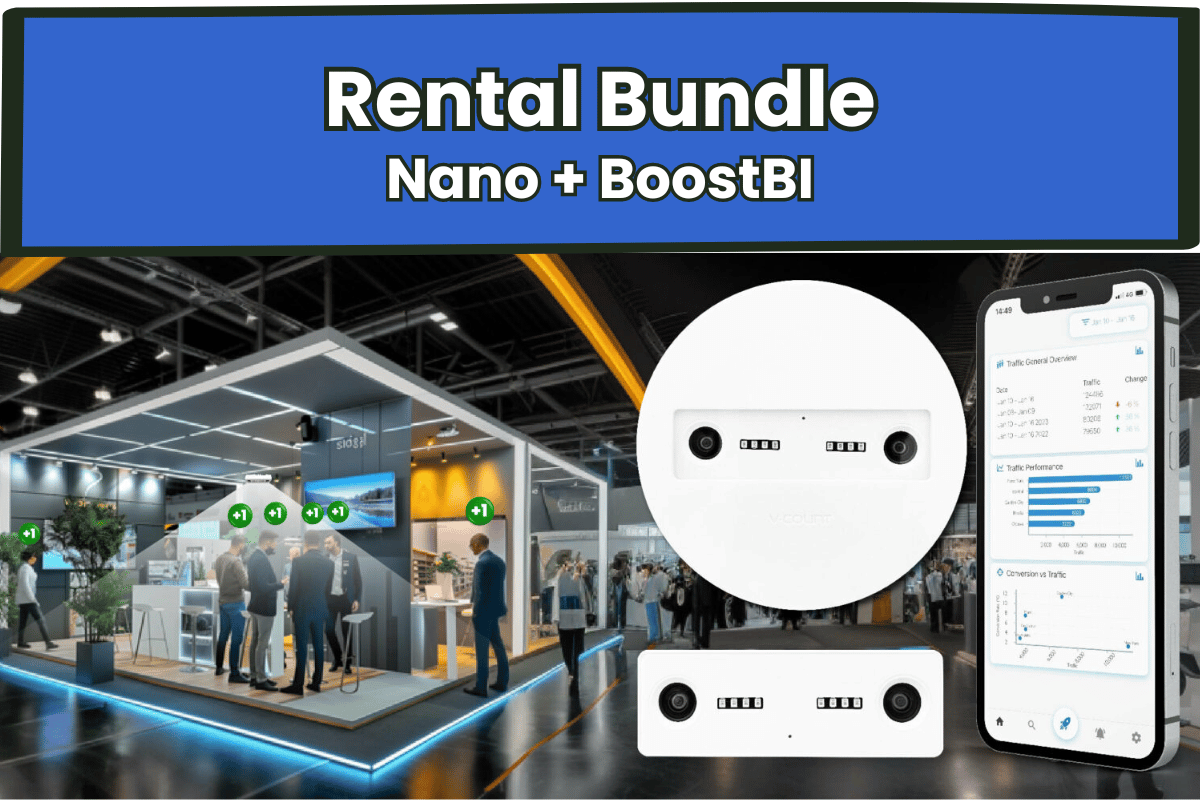In today’s cutthroat retail environment, where competition is fierce and unforgiving, gaining a deep understanding of customer behavior is not just helpful, but an absolute necessity for success. Retailers, in their quest to stay ahead of the curve, employ a multitude of metrics to measure their performance and seek ways to improve it. One such metric that has proven to be particularly telling is dwell time.
Dwell time refers to the length of time a customer spends within a retail environment, be it a physical store or a virtual one. This seemingly simple measure can unlock a wealth of knowledge about customer engagement and satisfaction. The longer a customer dwells, the more engaged they are likely to be with the products and the more satisfied they are with the shopping experience. This, in turn, can have a significant impact on sales and overall profitability.
In this comprehensive blog post, we will delve deeper into the importance of dwell time for retailers. We’ll take a look at how it can be a game-changer in understanding customer behavior, and how savvy retailers can leverage this information to maximize their business outcomes, creating a more engaging and satisfying shopping experience for their customers.
1. Understanding Customer Engagement
Dwell time is a crucial metric that provides a direct measure of customer engagement within a store environment. The length of dwell time typically serves as an effective indicator of how inviting and engaging customers find the store. When customers spend longer periods in a store, it often suggests that they are captivated by the store’s ambiance, which may be a result of a well-thought-out store layout, appealing product displays, and an overall pleasant and enjoyable shopping experience.
By closely tracking dwell time, retailers can gain valuable insights into their customers’ behavior and preferences. They can identify which areas within the store are the most captivating and attention-grabbing for customers. This information is invaluable for store owners, as it helps them understand which parts of their store are performing well and which areas might require improvement or modification.
In this way, the measurement of dwell time offers retailers a powerful tool for optimizing their store layout and merchandising strategies, ultimately leading to improved customer satisfaction and increased sales.
2. Enhancing Store Layout and Design

Understanding and analyzing dwell time can provide retailers with valuable insights that help them to optimize their store layout to better suit their customers’ needs. For example, if certain areas of the store consistently show shorter dwell times, it may indicate that these sections are less attractive to shoppers or perhaps more challenging to navigate. This could be due to a variety of factors such as poor signage, confusing display arrangements, or a lack of visual appeal.
Retailers can use this crucial information to strategically redesign these areas. This could involve improving the signage to provide clearer directions to customers, re-arranging the displays to ensure products are easy to find and access, or creating more visually appealing setups to draw the attention of shoppers. The aim is to transform these underperforming areas into spaces that encourage customers to linger and browse, thereby increasing the likelihood of purchases.
On the other hand, areas with high dwell times are clearly resonating with shoppers. But rather than simply acknowledging their success, retailers can take steps to further enhance these areas. This could involve expanding the range of products on offer, implementing engaging marketing displays, or even simply ensuring that high-demand products are always in stock. By focusing on maximizing the effectiveness of these popular areas, retailers can further improve their overall store performance and customer satisfaction.
3. Product Placement and Merchandising
Understanding where customers spend the majority of their time while shopping is an invaluable insight for retailers, as this information can guide strategic product placement decisions. The objective is to maximize the visibility and appeal of high-margin or promotional items by placing them in high-traffic areas within the store. For instance, if the data collected on customer dwell time reveals that customers tend to linger longer in the electronics section of the store, this can be leveraged to the retailer’s advantage.
By strategically placing new and high-profit items in this area, the retailer can significantly increase the likelihood of these items catching the customer’s eye, and thus, making a sale. This informed and calculated approach to product placement, driven by detailed dwell time insights, can have a significant impact on overall sales. It can also lead to more efficient inventory turnover, further enhancing the profitability and performance of the retailer. By combining smart data analysis with strategic product placement, retailers can create a more captivating shopping environment that not only attracts customers but also encourages them to make purchases.
4. Personalizing Customer Experience

Longer dwell times in a retail environment provide retailers with a wealth of opportunities to engage with customers on a more personal and intimate level. With an extended time spent in-store, staff members have more time to interact with customers, offer assistance, and provide personalized product recommendations based on observed behavior patterns. This high level of interaction not only enhances the overall shopping experience by providing a more customized service, but it also helps to build stronger bonds of customer loyalty.
In addition to the benefits of direct customer engagement, longer dwell times also provide retailers with a valuable source of data. Retailers can analyze dwell time data to gain insights into customer behavior and preferences. These insights can be used to tailor marketing messages and promotions to different customer segments, thereby increasing the relevance and effectiveness of their marketing efforts.
In this way, longer dwell times do not simply lead to more transactions, but they can also contribute to a more personalized and engaging shopping experience. This, in turn, can help retailers to build a loyal customer base and increase the overall effectiveness of their marketing operations.
5. Measuring the Impact of Marketing Campaigns
Dwell time, which refers to the length of time a customer spends within a particular area of a store, is a potent metric that can be used to gauge the success of in-store marketing campaigns and promotions. The calculation of dwell time provides valuable insights into customer behavior and can serve as a powerful tool for retailers who are looking to maximize customer engagement.
Comparing the dwell times before, during, and after a marketing campaign allows retailers to fully assess the effectiveness of their promotional efforts. This comparison can provide an accurate picture of whether the campaign was successful in attracting customers to specific areas of the store and keeping them engaged with the products on offer.
For instance, if a particular campaign leads to an increased dwell time, especially in the targeted areas where the campaign was focused, it can be considered successful. This indicates that the campaign was not only successful in attracting customers to the area but also effective in keeping them engaged for a longer period of time.
Such campaigns that show evidence of success can serve as a model for future marketing efforts. They can be replicated or adapted as needed, to continue enhancing customer engagement and ultimately, store profits. Regular analysis of dwell time and other related metrics can thus play a vital role in the development and refinement of effective in-store marketing strategies.
6. Improving Customer Satisfaction

A comprehensive and in-depth understanding of the concept of dwell time can offer invaluable insights to retailers, allowing them to identify and effectively address potential areas of concern within the customer journey. Dwell time, or the length of time a customer spends within a certain area of a store, can often be indicative of various aspects of the customer experience.
For example, if there are unusually long dwell times observed in checkout areas, this might be a strong indication of existing inefficiencies or problems with the payment process. Such issues might include complex payment systems, understaffed checkout points, or outdated technology. Recognizing these issues based on the data gathered could prompt the need for significant changes, such as hiring additional staff, implementing improved, user-friendly technology, or reevaluating the layout of the store.
By addressing and smoothing out these friction points, retailers can significantly enhance the overall customer satisfaction. This in turn, can lead to increased customer loyalty, encourage repeat visits, and ultimately, contribute to the long-term success and profitability of the retail business.
7. Boosting Sales and Revenue
It is important to note the significance of dwell times in the retail industry, as they are frequently correlated with higher sales volumes. The underlying reason for this is quite simple: the longer a customer spends within a store, the higher the likelihood that they will make additional purchases. This principle is in fact a key cornerstone of retail strategy, and understanding it can unlock significant opportunities for revenue growth.
To capitalize on this, retailers should concentrate their efforts on strategies that can extend dwell times. One such strategy is the creation of an inviting, welcoming atmosphere that makes customers feel comfortable and entices them to stay longer.
Another effective approach is to provide engaging product displays that capture customers’ attention and encourage them to explore the store’s offerings in more depth. Offering exceptional customer service is also crucial, as it not only enhances the shopping experience, but also builds customer loyalty. By implementing these strategies, retailers can stimulate longer dwell times, which in turn can drive higher sales and ultimately, increase revenue.
Which People Counter Should I Prefer for Dwell Time Data?

When it comes to selecting a people counter to collect accurate dwell time data, Nano is an exceptional choice that stands head and shoulders above the rest. One of the key distinguishing features of Nano is its unparalleled ability to capture dwell time with precision. Moreover, it is the sole sensor in the entire industry that fully performs staff exclusion, thereby ensuring the accuracy of customer data.
Nano is a plug-and-play product that boasts of simplicity and convenience in installation. Its performance is impeccable with an impressive accuracy rate of 99%. The sensor operates over Wi-Fi and has an extensive range of up to 40 meters, further enhancing its usability and functionality.
But that’s not all. Nano has a wealth of additional features that make it a highly versatile tool for any retailer. It offers capabilities like group counting, queue management, and real-time occupancy solutions, making it a comprehensive solution for a myriad of retail needs.
To complement the functionality of Nano , we offer our visitor analytics tool, BoostBI. When paired together, they form a powerful duo that provides retailers with a mobile application and an innovative feature known as the Sales Coach. The Sales Coach is a unique tool that analyzes historical data to provide optimization suggestions. This insight can help businesses enhance their profitability by making strategic changes based on data-driven insights.
BoostBI mobile app boasts a user-friendly interface and provides access to critical data anytime, anywhere. This makes it a powerful tool that empowers retailers to make informed decisions that drive growth effectively.
Conclusion
Dwell time is more than just a metric; it’s a window into the customer experience. By paying close attention to how long customers spend in various parts of the store, retailers can gain valuable insights that inform strategic decisions.
From optimizing store layout and product placement to enhancing customer engagement and satisfaction, leveraging dwell time data is essential for any retailer looking to stay competitive and drive growth. In a landscape where every second counts, understanding and maximizing dwell time can be the key to unlocking greater success.





